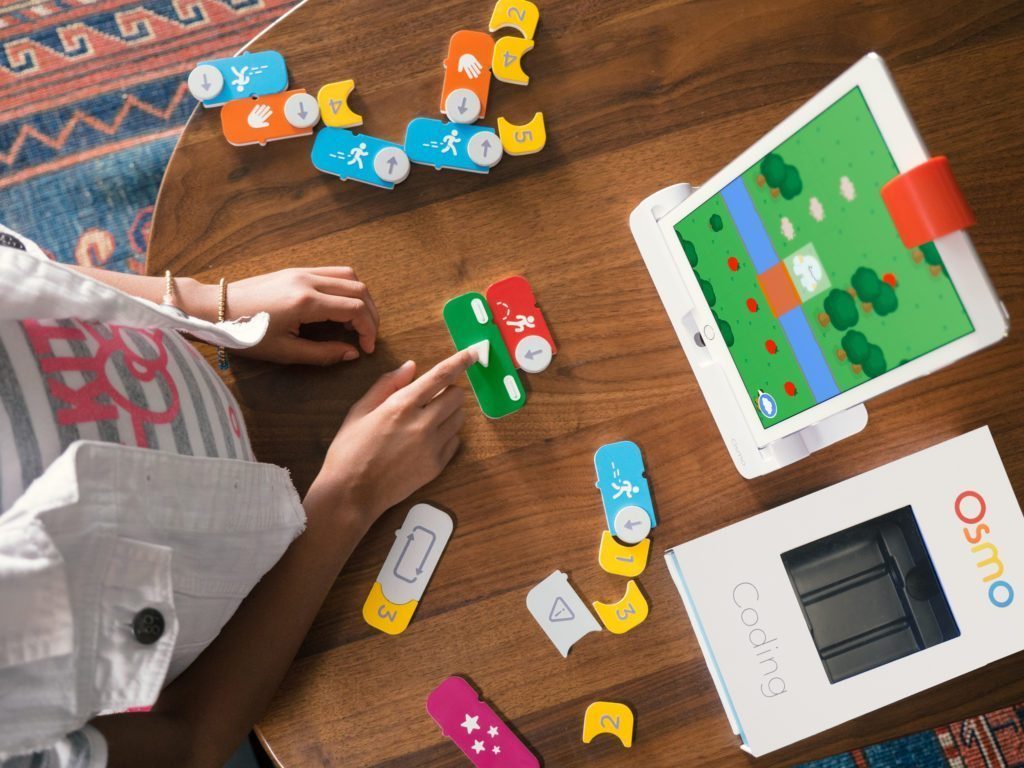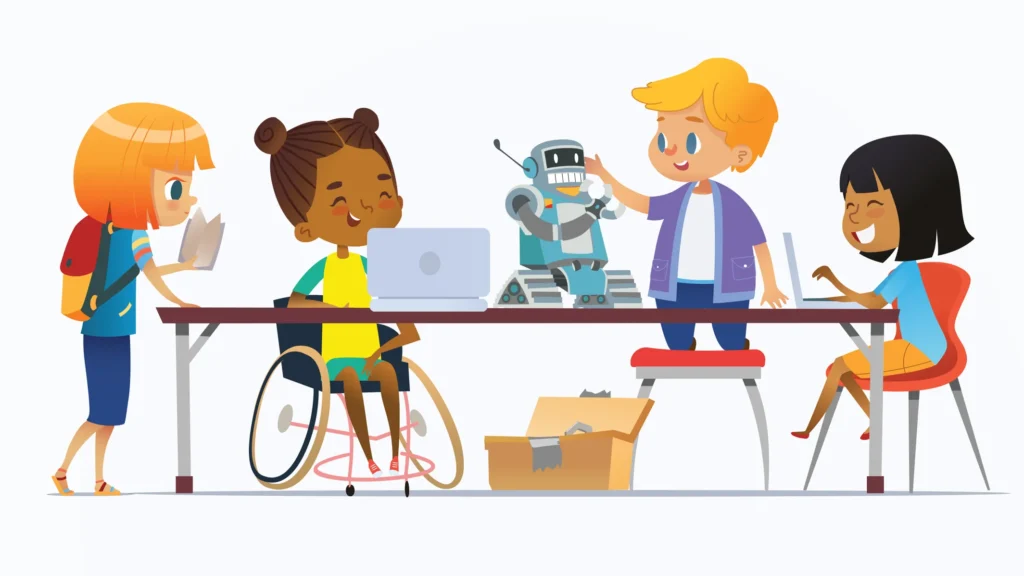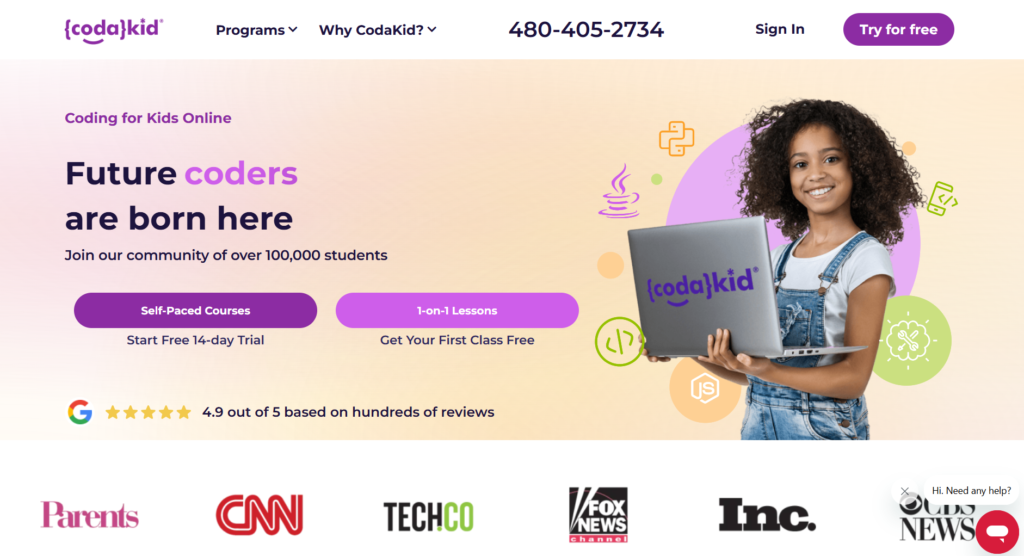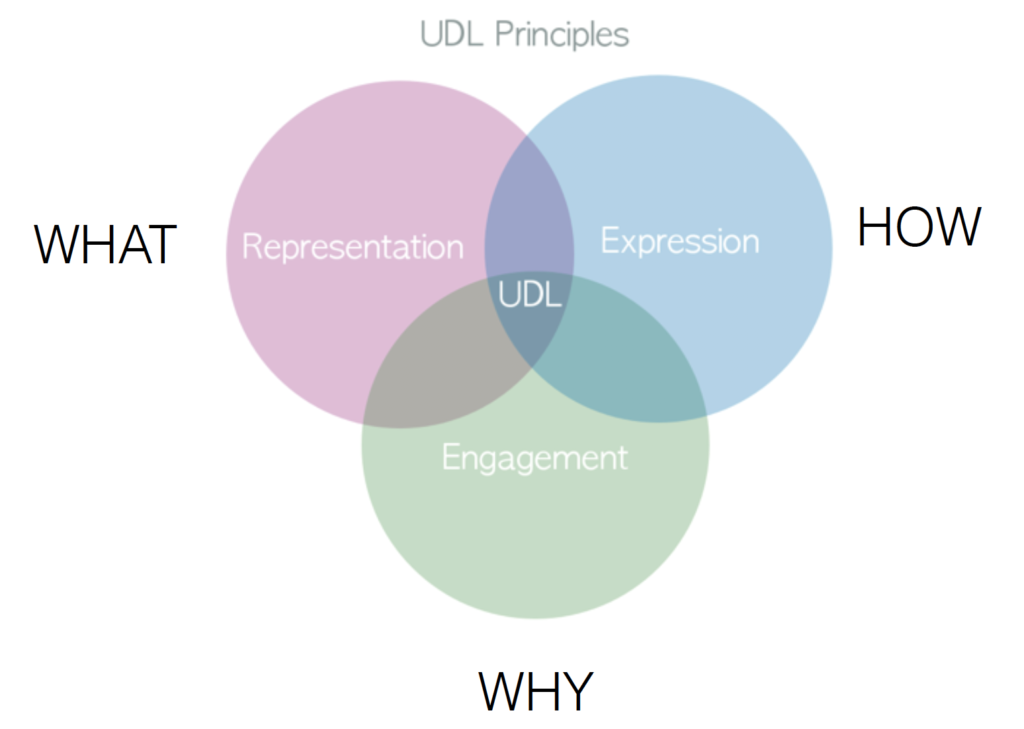
We offer a comprehensive curriculum developed by an international team, experienced teachers, and a focus on individualized and project-based learning.

We offer a comprehensive curriculum developed by an international team, experienced teachers, and a focus on individualized and project-based learning.

Coding is more than just a technical skill—it’s a powerful tool for learning, creativity, and self-expression. For kids with special needs, including autistic children, coding can accelerate their learning compared to other subjects like languages or music, leveraging their strong math and logic skills.
With accessible platforms, adaptive tools, and methods tailored to diverse challenges, coding provides a way to harness logical thinking while unlocking new possibilities. This post explores how coding can empower children with special needs, offering practical tips and insights to create an inclusive, engaging learning experience.
Coding is a valuable skill that can benefit kids with special needs in numerous ways. It’s not just about learning to write code; it’s about enhancing problem-solving skills, sparking creativity, and building confidence. For children with special needs, coding offers a fun and interactive way to engage with technology and develop essential skills.
Imagine a child who struggles with traditional learning methods finding joy in creating their own game or animation. Coding transforms learning into a playful experience, making complex concepts more accessible. It encourages kids to think logically, break down problems into manageable steps, and find solutions—skills that are invaluable in everyday life.
Moreover, coding projects provide immediate feedback, allowing children to see the results of their efforts in real-time. This instant gratification can be incredibly motivating, helping kids stay engaged and excited about learning. By integrating coding into their education, we can open up new avenues for growth and development, making learning both enjoyable and impactful.

Coding offers a unique set of benefits for children with special needs by fostering cognitive, social, and emotional development. It serves as both a creative outlet and a structured activity that aligns with diverse learning styles and challenges. Coding classes provide structured learning experiences that align with children’s interests and developmental needs. For kids on the autism spectrum, children with ADHD, or those facing physical or learning disabilities, the structured and logical nature of coding can become a significant tool for growth. Below, we explore specific ways coding supports their development.
Coding enhances problem-solving skills, which are particularly beneficial for children on the autism spectrum. Writing code requires breaking complex tasks into smaller, manageable steps, encouraging logical thinking. Kids learn to identify patterns, develop algorithms, and troubleshoot errors—skills that translate into everyday life decision-making. Learning to code allows children to design and build their own computer programs, fostering imagination and creativity.
For instance:
Logical sequencing: Applications like Scratch teach kids to arrange actions in a meaningful order, promoting clearer thinking.
Debugging challenges: Solving errors in code develops perseverance, a skill that helps with self-regulation and patience.
Pattern recognition: Focusing on patterns or sequences can stabilize a sense of predictability, which many children with autism find comforting.
By engaging in these structured, task-oriented activities, children build mental frameworks that can help them approach real-world challenges more confidently.
While coding might seem like a solitary activity, it often involves teamwork through collaborative projects. This can significantly benefit children who struggle with social interaction or communication, such as those on the autism spectrum or with ADHD. Coding requires sharing ideas, brainstorming solutions, and working together to achieve a common goal, thereby promoting discussions and the exchange of ideas which enhance their communication skills.
For example:
Group coding projects: Platforms like Code.org promote teamwork by encouraging kids to co-develop apps or games in a virtual environment.
Peer-to-peer interaction: Coding clubs or online sessions create opportunities for kids to interact in a structured, low-pressure setting.
Improved communication: Explaining their code’s logic to peers helps kids with special needs articulate their thoughts more clearly, building confidence in social settings.
These environments allow children to experience collaboration in a way that feels safe and manageable, equipping them with skills they can use in broader social contexts.
One of the most rewarding aspects of coding is creating something tangible—a game, an animation, or even just a functional webpage. For children with special needs, seeing their ideas come to life fosters independence and self-esteem. Structured learning experiences in coding can provide a sense of accomplishment and boost self-esteem.
Key takeaways:
Immediate feedback: Many coding platforms offer real-time results, showing kids how small changes can impact their work.
Personalized success: The ability to work at their own pace and achieve milestones encourages a sense of accomplishment.
Creativity and ownership: Designing a project from start to finish allows kids to feel pride in their work, giving them control over what they produce.
As they tackle progressively tougher challenges, kids experience the joy of mastery, helping them build resilience and the courage to take on more complex tasks in life.
By incorporating coding into education or therapy for children with special needs, parents and educators can provide an enriching framework that not only teaches technical skills but also nurtures cognitive, social, and emotional growth. These benefits highlight why coding is becoming an essential tool for inclusive education.

When teaching coding to kids with special needs, one-size-fits-all methods rarely work. Children learn differently, especially when their abilities and challenges vary. By tailoring coding instruction to individual strengths and needs, educators can make the experience both inclusive and effective. This section explores specific tools and strategies to adapt coding for diverse learners. Using fun projects to teach coding, such as gaming and app development, can make the learning process enjoyable and effective.
For younger children, especially those facing cognitive or language-based challenges, block-based programming tools like Scratch and Blockly are ideal. These platforms use drag-and-drop functionality to create code, eliminating the need to type complex syntax. Instead of overwhelming text, children work with colorful blocks that snap together like puzzle pieces—visuals that make abstract coding concepts tangible.
Why is this helpful?
Lower language barriers: Kids focus on logic and creativity without worrying about spelling or syntax errors. This is particularly beneficial for children with dyslexia or speech delays.
Immediate feedback: Visually seeing their commands in action (like making a character move or speak) keeps learners engaged and reinforces their understanding.
Sequential learning: By arranging blocks in a specific order, kids learn the foundational skills of sequencing and conditional thinking.
Scratch, for example, allows children to create their own stories or games while learning the basics of coding in a playful environment. Similarly, Blockly introduces programming at a gentle pace, making it accessible to younger kids with or without special needs.
A critical aspect of teaching coding to kids with special needs is ensuring the tools they’re using are accessible. Platforms that integrate voice commands, screen readers, or alternative input devices make coding possible for students with mobility challenges, visual impairments, or auditory processing disorders. Adaptive technologies transform barriers into opportunities. Communication coding activities, such as code documentation, help improve written communication skills for children with autism.
Here’s how accessible coding tools are making a difference:
Voice-activated coding tools: Platforms like CodeSpeak translate spoken words into code, enabling students with motor disabilities to program using just their voice.
Screen reader compatibility: Websites and programs designed for screen readers help children who are blind or visually impaired follow along and participate in coding activities.
Alternative input devices: Joysticks, adaptive keyboards, and switches allow kids with limited motor functions to interact with coding applications seamlessly.
These technologies ensure that coding education meets the needs of every child, emphasizing empowerment and equity.
Children with special needs often thrive in environments where learning feels like play. Gamification, or the use of game mechanics in educational settings, is a proven method for boosting engagement and motivation. By turning lessons into games, coding becomes a fun, rewarding experience rather than a chore.
How does gamification support learning?
Clear goals and rewards: Gamified platforms like Tynker or CodeCombat provide instant gratification through points, badges, or unlocked levels, encouraging kids to keep trying—even if they make mistakes.
Reduced overwhelm: Bite-sized tasks and challenges make coding more approachable for children with ADHD or other attention difficulties.
Interactive storytelling: Learning how to code through storytelling games holds attention while helping children express their creativity.
For example, using a platform like CodeMonkey, kids solve puzzles by writing code to guide an animated monkey toward bananas. Games like this promote logic-building while keeping kids entertained, even for those typically hesitant to engage in traditional academic tasks.
By combining visuals, accessibility, and interactive elements, tailored coding approaches ensure that kids with special needs aren’t just learning—they’re thriving.

When teaching coding to kids with special needs, selecting the right programming language is crucial. The goal is to choose languages that are accessible and engaging, making the learning process enjoyable and effective. Visual programming languages like Scratch and Blockly are particularly well-suited for young learners.
Scratch and Blockly use visual blocks instead of text-based code, which simplifies the coding process. Kids can drag and drop these blocks to create sequences, making it easier to understand coding concepts without getting bogged down by syntax errors. This approach is especially beneficial for children with special needs, as it reduces frustration and allows them to focus on problem-solving and creativity.
These visual programming languages also help develop fine motor skills. The act of manipulating blocks on the screen can improve hand-eye coordination and dexterity. Additionally, the colorful, interactive interfaces of Scratch and Blockly make coding a fun and engaging activity, encouraging kids to experiment and explore.
By choosing the right programming language, we can create a learning environment that is both accessible and enjoyable, helping kids with special needs develop essential skills in a fun and interactive way.
When it comes to teaching coding to kids with special needs, the tools and resources you choose can make a world of difference. Accessibility, adaptability, and engagement are key factors that ensure every child has an equal opportunity to learn and thrive. Here, we’ll dive into some of the most recommended tools tailored to meet varying needs, from free platforms to specialized programs and hands-on learning tools.
Free platforms like Scratch, Code.org, and Khan Academy are fantastic starting points for kids with special needs. These platforms prioritize accessibility and simplify complex coding concepts, making learning approachable, even for beginners.
Scratch: Designed by MIT, Scratch uses block-based programming to allow kids to create games, animations, and stories. It’s highly visual, which is particularly beneficial for children with learning disabilities or difficulties in reading and writing. Its drag-and-drop interface eliminates the stress of typing, making it adaptable for children with motor skill challenges.
Code.org: This platform offers structured, highly interactive tutorials designed for young learners. Its courses, categorized by age and difficulty, often include videos, puzzles, and collaborative projects that engage students with ADHD or other attention difficulties.
Khan Academy: Known for its accessible educational content, Khan Academy incorporates coding alongside subjects like math and science. Its self-paced lessons and adaptive features work well for children who need extra time or prefer working independently.
These platforms are free, easily accessible online, and tailored to foster a fun, interactive coding experience.

For parents and educators seeking more structured and inclusive learning paths, programs like CodaKid and Coding Autism stand out as excellent options. These programs are built with inclusivity in mind, offering personalized support and mentoring for kids with unique learning needs. Specialized programs also cater to the logical thinking and visual learning styles of autistic kids, providing excellent educational opportunities.
CodaKid: Known for its engaging, project-based curriculum, CodaKid teaches coding through real-world applications like game development or app creation. Its self-paced courses, combined with mentor support, make coding accessible for children with special needs. They also use real programming languages like Python and JavaScript, setting kids up for success in more advanced coding adventures.
Coding Autism: This program specifically focuses on empowering children and young adults on the autism spectrum. Beyond teaching technical coding skills, it also provides career-focused training and social integration support. The program incorporates one-on-one mentoring, which helps address individual learning challenges and fosters confidence.
With their tailored teaching methods, these specialized programs ensure an inclusive and adaptive learning experience for kids with varied abilities.
Physical computing tools introduce an interactive, hands-on element to coding, which can be incredibly beneficial for kids with special needs. By combining coding with tactile learning, kids build better engagement and motor coordination, turning abstract concepts into tangible results.
Osmo Coding: Osmo combines coding with physical manipulatives like tiles and blocks. Children use these pieces to control characters in a game, teaching them coding basics like sequencing and loops. Its physical, game-like setup makes it especially beneficial for young learners or those who benefit from multi-sensory approaches.
Raspberry Pi: This small, affordable computer lets kids explore coding by building real electronics projects. From creating weather stations to programming robots, Raspberry Pi offers hands-on opportunities to learn coding while nurturing problem-solving skills. It’s an excellent tool for visual learners and those who thrive with experimental, trial-and-error-based activities.
These tools emphasize tactile interaction, which can help kids stay engaged and even improve their motor skills as they code.
Whether using free platforms, specialized programs, or hands-on tools, the key is finding resources that align with your child’s unique needs. These tools make coding accessible, enabling children with special needs to explore technology in ways that are both meaningful and empowering.
Creating an inclusive learning environment is pivotal when teaching coding to kids with special needs. It’s not just about adapting teaching methods; it’s about fostering a space where every child feels seen, respected, and capable of success. Whether this environment is physical or virtual, small changes can make significant differences in how children engage and thrive. Let’s explore actionable strategies to support effective, inclusive coding education.
Kids with special needs often face challenges in environments that are overstimulating or disorganized. To help them succeed in coding activities, it’s essential to create structured, calm settings that reduce unnecessary distractions.
Strategies to consider:
Customizable settings in software tools: Using coding platforms like Scratch or Blockly, which allow kids to set preferences like background themes, text colors, or sound levels, can minimize sensory overload. Tools with adjustable features give children control over their experience.
Quiet workspaces: For physical learning environments, dedicate quiet corners or soundproofed areas where kids can focus without interruption. If teaching online, ensure that students have noise-canceling headphones or access to quieter zones.
Visual clarity: Avoid cluttered interfaces or teaching materials. For example, keep coding instructions simple and clearly separated from other elements to prevent cognitive overload.
Breaks and pacing: Break tasks into smaller, manageable chunks, and schedule regular breaks. Using timers helps children with ADHD stay on track without feeling overwhelmed.
By intentionally designing low-sensory, distraction-free areas, you’re offering kids a stable and supportive foundation where learning can happen confidently.
Positive reinforcement can make a world of difference for kids with special needs, especially when they’re tackling something as potentially challenging as coding. Acknowledging their progress—no matter how small—builds self-esteem and encourages them to keep learning.
How to boost motivation:
Personalized rewards: Celebrate achievements with meaningful rewards based on the child’s interests. If a student loves space, perhaps rewarding them with digital badges featuring planets and rockets will resonate more.
Immediate feedback: Platforms like Code.org and Tynker provide real-time results, letting kids see the impact of their coding work immediately. This type of instant gratification boosts interest and fosters a sense of accomplishment.
Gamify milestones: Turn completed tasks or lessons into celebrated “levels achieved” with certificates or virtual trophies.
Tie coding to personal passions: If a student loves animals, have them create a coding project featuring animations of their favorite creatures. Making learning relatable keeps them engaged.
Recognizing wins isn’t just about saying “great job.” It’s about crafting an environment where kids feel motivated to explore, experiment, and take pride in their abilities.

Universal Design for Learning (UDL) principles aim to make education adaptable for all. For coding education, this means using flexible teaching approaches and tools that accommodate diverse learning styles from the start, rather than retroactively adjusting for student needs.
Core strategies include:
Multiple means of engagement: Provide various ways for students to connect with coding lessons. For example, some kids might prefer visual step-by-step tutorials, while others benefit from interactive videos or hands-on activities involving physical coding tools like Osmo.
Flexible outputs: Let students demonstrate their understanding in formats they’re comfortable with. One child might program a character to perform a dance, while another creates an interactive quiz—it’s all coding!
Assistive technologies: Integrate tools like screen readers, text-to-speech software, or adaptive keyboards if needed. These additions ensure that students with disabilities can fully participate.
Emphasize process, not perfection: UDL encourages iterative learning rather than penalizing mistakes. For instance, when a coding project doesn’t work as intended, guide kids through debugging in an encouraging way.
By proactively shaping lessons based on UDL, you’re not only supporting kids with special needs but also creating a better learning environment for everyone.
Including coding in inclusive learning environments isn’t just about providing technical skills—it’s about showing kids they belong in spaces where they can innovate, create, and achieve something meaningful. Building that environment, step by step, ensures every child has the tools they need to succeed.
Computer science education is essential for kids with special needs, offering a structured learning experience that fosters growth in multiple areas. It’s not just about learning to code; it’s about developing problem-solving skills, critical thinking, and creativity. These skills are crucial for navigating the complexities of the modern world.
For children with special needs, computer science education provides a sense of accomplishment and boosts self-confidence. Completing a coding project, whether it’s a simple animation or a more complex game, gives kids tangible proof of their abilities. This sense of achievement can be incredibly empowering, encouraging them to take on new challenges with confidence.
To make computer science education accessible and enjoyable, it’s important to use adaptive tools and methods tailored to individual needs. This might include using visual programming languages, incorporating gamified learning elements, or providing one-on-one support. By creating an inclusive learning environment, we can ensure that every child has the opportunity to succeed and thrive.
Neurodiverse kids, including those on the autism spectrum, can greatly benefit from learning to code. Coding provides a structured and predictable environment, which can be comforting for children who thrive on routine and order. The logical nature of coding aligns well with the strengths of many neurodiverse individuals, such as attention to detail and pattern recognition.
Engaging in coding activities helps neurodiverse kids develop problem-solving skills, critical thinking, and creativity. For example, writing code to solve a specific problem requires breaking it down into smaller, manageable steps—a process that enhances logical thinking and decision-making. These skills are not only valuable in coding but also in everyday life.
To make coding accessible and enjoyable for neurodiverse kids, it’s important to use tools and methods that cater to their unique needs. Visual programming languages like Scratch and Blockly are excellent choices, as they provide a clear, visual way to understand coding concepts. Additionally, incorporating interests and passions into coding projects can make learning more engaging and meaningful.
By providing neurodiverse kids with the tools and support they need to succeed in coding, we can help them unlock their full potential and build a foundation for future success.
When children with special needs learn coding, they aren’t just picking up a skill—they’re opening doors to a world of possibilities. Technology is an ever-expanding field with opportunities for innovation and creativity. Coding can not only shape their future career possibilities but also provide essential life skills that empower independence and self-confidence.
Right now, coding is one of the most sought-after skills in the global job market. From software development to artificial intelligence, the demand for programmers continues to grow. This is great news for kids learning coding at a young age, as they’ll have a head start in a field with endless potential.
Children with special needs often display unique strengths well-suited to coding roles, such as attention to detail, strong problem-solving skills, and a knack for pattern recognition. In fact, many companies are actively seeking programmers with creative, out-of-the-box thinking—qualities often associated with neurodiverse individuals.
Some career opportunities that coding can lead to include:
Software Developer: Creating applications, games, or systems millions use daily.
Web Developer: Designing and maintaining websites for businesses, nonprofits, and more.
Game Designer: Developing fun and engaging games that reach global audiences.
Data Analyst: Using coding to interpret and present data trends.
Cybersecurity Specialist: Protecting online systems and data from threats.
By teaching coding at an early age, especially through accessible platforms like Scratch or Code.org, you’re setting a foundation for kids to thrive in the tech job market. These skills won’t just help them navigate future careers—they’ll also provide a competitive edge.

Coding isn’t just about mastering syntax and algorithms; it’s about building a toolkit for independence. When kids with special needs acquire coding skills, they learn how to solve problems, think logically, and adapt to challenges. Beyond its value in the job market, coding equips children with abilities that reduce their dependence on others.
Here’s how coding fosters independence:
Adaptability: Coding teaches kids to adapt when things don’t go as planned. Debugging a project trains them to find solutions independently, which is a skill they can carry into all aspects of life.
Decision-Making: When writing code, children constantly face choices—what approach to take, how to organize sequences, or which tools to use. These small decisions add up, building confidence in their decision-making process.
Real-World Applications: From programming basic robots to designing webpages, kids see immediate, practical results from their efforts. This shows them they can contribute meaningfully, both in learning environments and in real-world contexts.
Self-Paced Learning: Many coding platforms allow kids to learn at their own pace, reinforcing self-reliance and personal responsibility for progress.
Moreover, coding careers are increasingly remote-friendly, offering flexibility that can accommodate unique needs. Whether managing sensory sensitivities or mobility challenges, a tech job can fit into their lifestyle with fewer barriers than many traditional careers.
By empowering children with job-ready skills, coding becomes much more than a subject—it’s a pathway to self-sufficiency and a meaningful, productive future.
When teaching coding to kids with special needs, challenges will inevitably arise. Every child has unique abilities and learning styles that can make a standardized approach difficult. By anticipating these challenges and implementing specific strategies, educators and parents can create an environment where every child has the opportunity to thrive.
Personalizing a coding curriculum for children with special needs means putting their strengths and interests at the center of the learning process. It’s not about fitting children into a rigid framework but rather shaping lessons around their capabilities and preferences.
Here’s how to adapt effectively:
Assess strengths and challenges upfront: Begin by identifying the child’s cognitive, sensory, and physical needs. Does the child excel at visual learning? Or do they learn better through step-by-step verbal instructions? Knowing this can help tailor coding lessons. For example, students with autism who favor logical patterns might excel in debugging tasks.
Incorporate their interests: If a child loves animals or space, integrate these themes into coding projects. They can design a simple animation about their favorite animals or create a game set in outer space. This not only keeps them engaged but establishes a personal connection to what they’re learning.
Simplify and scaffold lessons: Break coding projects into smaller, manageable parts. Use platforms like Scratch or Blockly where kids can snap together visual “blocks” of code instead of typing, turning abstract concepts into something more concrete.
Leverage flexible learning tools: Choose platforms that can be customized. Many coding tools allow changes to settings like color contrasts, text size, or sound effects, making learning more accessible to kids with sensory sensitivities or visual impairments.
Celebrate incremental achievements: Reward small victories to build confidence. Whether it’s successfully programming a character’s first movement or completing a single lesson, positive reinforcement keeps children motivated.
By designing a curriculum that adapts to the child—and not the other way around—you’ll foster a more inclusive and productive learning experience.
Access to technology can be a significant hurdle for kids with special needs. Limitations in hardware, software, or accessibility features can make learning coding more difficult. The good news? These barriers are solvable with the right tools and strategies.
Key ways to overcome technological challenges include:
Ensure device accessibility:
Use adaptive keyboards, mice, or alternative input devices (like joysticks or switches) for children with motor impairments.
Incorporate tools like voice command systems, which allow kids to code using verbal instructions rather than physical typing. Platforms like CodeSpeak are great examples.
Integrate assistive technologies:
For visually impaired students, screen readers or magnification tools can make coding platforms like Python more navigable.
Text-to-speech and speech-to-text software can help students with dyslexia or other language-based challenges participate more actively.
Address unequal access at home:
In cases where students don’t have consistent internet access or devices at home, schools or nonprofits can step in to provide loaner laptops or mobile hotspots. Partnering with local libraries or community centers can also be an effective solution.
Select platforms designed for inclusivity:
Use coding tools built with accessibility in mind. Code.org and Scratch not only offer user-friendly interfaces but also prioritize inclusive features like simplified commands, high-contrast graphics, and adaptable content for diverse learners.
Teach digital literacy skills alongside coding: Before diving into programming concepts, some children may need assistance learning basic technology use. Show them how to navigate a platform, use a keyboard, or control a cursor, depending on their needs.
By removing barriers to technology, we provide children the tools they need for an equal shot at success. Equip kids with accessible, reliable tech, and you’ll open the door to possibilities they’ve never imagined.
Coding can transform how children with special needs learn, communicate, and grow. By embracing tailored approaches, accessible tools, and inclusive teaching methods, educators and parents can help these kids unlock new opportunities and potential.
Every child deserves the chance to thrive. Start exploring accessible platforms like Scratch, Code.org, or adaptive technologies today, and champion a future where learning is inclusive for all.

FutureClassroom is Southeast Asia's largest coding platform for K-12, empowering students with essential skills in Web Development, Game Development, Python, and AI. Aligned with Cambridge and Pearson standards, our platform combines interactive learning and real-world projects to prepare young learners for a future driven by technology.
View all posts
FutureClassroom is Southeast Asia's largest coding platform for K-12, empowering students with essential skills in Web Development, Game Development, Python, and AI. Aligned with Cambridge and Pearson standards, our platform combines interactive learning and real-world projects to prepare young learners for a future driven by technology.
Get all the latest information, support and guidance about the cost of living with kindergarten.
Start Registration